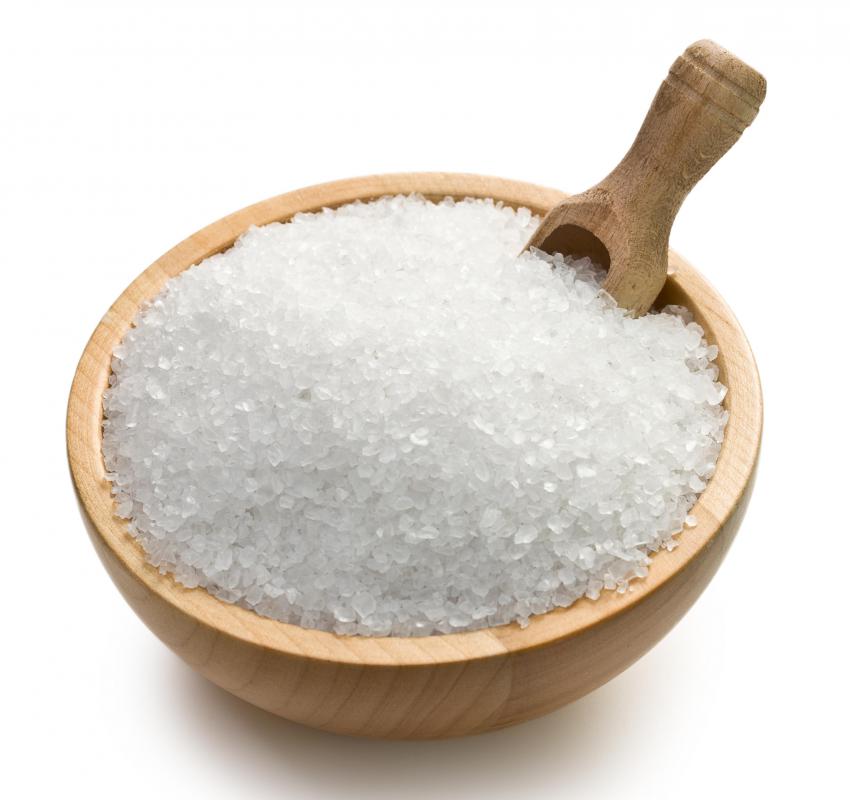At WiseGEEK, we're committed to delivering accurate, trustworthy information. Our expert-authored content is rigorously fact-checked and sourced from credible authorities. Discover how we uphold the highest standards in providing you with reliable knowledge.
How can I Make my Own Bath Additives?
Bath additives are an excellent way to make a tub more enjoyable. Many commercial products are designed to relax the body, ease muscle pain, or simply smell delicious. Consumers can also make their own bath additives to create a customized bath incorporating favorite ingredients or scents. Most of the ingredients for bath additives are readily available at spa supply stores or at the local market, depending on which ingredients you need.
All bath additives start with a base. Common bases include dried milks, powdered grains, clays, and salts. Bath salts have been used traditionally to improve skin health and ease muscle pain for centuries. Epsom salts are a common choice, but more exotic ingredients like Dead Sea Salts could also be used. Dried milks for use in bath additives include cow and goat's milk, or you could branch out into coconut or nut milks. Bath additives usually use dried milks because they have a longer shelf life, and are concentrated to release their properties in the bath water. Fresh milk could be used, but you will have to use much more of it. Powdered grains like colloidal oats are also interesting additions to a bath additive, and possess unique skin care properties.

Clays and muds have also been used in bath additives for centuries. Many parts of the world still have traditional mud baths that take advantage of the high mineral content of local earth. Some nations also export their muds and clays: Moor mud from Hungary, for example. Muds and clays in a wide range of colors can be found to relax the body and nourish the skin. Most muds are also very easy to clean up, although you may want to purchase products customized for spas if you are concerned about tub residue.

Once you have established a base, you can start to think about additional ingredients. Most muds are more effective when used alone, and will conflict with other ingredients. Salts and milks both take well to additional ingredients such as dried herbs and essential oils. Use essential oils in bath additives with care: some oils such as orange and clove are irritants in large amounts, and could cause discomfort. Dried grains go very well with herbs like ginger and passionflower. To ease cleanup issues, use powdered ingredients rather than dried ones which will tend to stick to the side of the tub.

Bath additives are limited only by your imagination. Think about how ingredients will combine together and what the desired effect is to create a customized and delicious bath additive. You might try starting with milk and honey baths, which could be made with dried buttermilk, dried honey, and vanilla essential oils. Milk and honey have been used in baths for centuries, and result in smooth, creamy skin. For a relaxing bath, salts could be combined with lavender and rose essential oils. For more intensive skin care, mild clays like illite or French Green could be combined with coconut milk and essential oils to leave smooth, sweet smelling skin behind. To relax muscle pain, salts or muds are ideal. For detoxification, dried seaweeds or volcanic ash could be used in pure form.
AS FEATURED ON:
AS FEATURED ON:















Discussion Comments
My favorite unique bath additive is seaweed. There are actually some commercial bath additives with seaweed but they cost a lot. I buy dry seaweed at the Asian grocery at a good price and add it to my bath water. It might seem strange at first because there is literally seaweed floating around in the tub. But it's so beneficial for the body and for skin, it's like detox.
Aloe vera is also a great bath additive because of its soothing and moisturizing properties. I don't think many people use it, but it certainly can be.
I had not thought of using coconut milk in the bath but that sounds like a great idea. I bet it would make my skin soft and moisturized, not to mention that I will get to smell like coconut afterward. Thanks for the tip!
I try to add three type of additives to my bath-- a salt, a herb and a moisturizer. The salt is either sea salt or Epsom salt. Herbs can really be anything like dry rose petals, dry lavender or sage. And the moisturizer is a natural oil like olive oil, almond oil or coconut oil.
I think this is a great combination because it not only relieves pain and stress, but it's also soothing and moisturizing. I love coming up with my own additives for baths because I can try different things and it ends up costing much less than bath fizzies or sitz salt products.
Post your comments